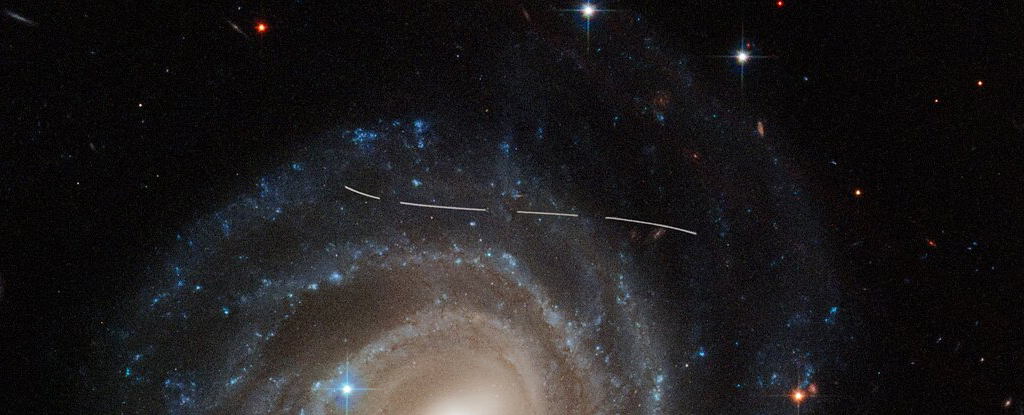Saturn’s moon Enceladus is a relatively small moon, about 500 km in diameter. In the Antarctic region, there is a pattern called a “tiger stripe” of several parallel cracks, and a plume (water column, geyser) is known to appear to radiate from this. Enceladus is a celestial body of great interest, where an inner ocean full of liquid water is expected to exist beneath the outer crust of ice covering the surface, and life is also possible. One.
[تم التقاط إنسيلادوس في 14 يوليو 2005 بالكاميرا ضيقة الزاوية لمسبار كاسيني زحل (تم إنشاؤه بناءً على البيانات التي تم الحصول عليها باستخدام مرشحات الأشعة فوق البنفسجية والمرئية والأشعة تحت الحمراء) (Credit: NASA / JPL / Space Science Institute)]
A team of researchers led by Geronimo Villanueva of NASA’s Goddard Space Flight Center observed Enceladus using the James Webb Space Telescope, revealing an unexpected plume. A paper summarizing the findings of Mr. Villanueva and others’ research has been accepted by Nature Astronomy, and a preliminary version has been posted on arXiv.
![[▲ عمود القمر إنسيلادوس التابع لكوكب زحل (في الخلفية) الذي تمت ملاحظته بواسطة مقياس طيف الأشعة تحت الحمراء القريب من تلسكوب جيمس ويب الفضائي (NIRSpec) وصورة إنسيلادوس التي التقطتها مركبة الفضاء كاسيني (أعلى اليسار) (الائتمان: الصورة: ناسا ، وكالة الفضاء الأوروبية ، وكالة الفضاء الكندية ، جيرونيمو فيلانويفا (NASA-GSFC) ؛ معالجة الصور ؛ أليسا باغان (STScI))]](https://sorae.info/wp-content/uploads/2023/06/Enceladus-plume-Cassini-James-Webb-JWST-NASA-STScI-01GYJ8KXBB9GYG58KF9V7WRSGT.jpg)
[▲ عمود القمر إنسيلادوس التابع لكوكب زحل (في الخلفية) الذي تمت ملاحظته بواسطة مقياس طيف الأشعة تحت الحمراء القريب من تلسكوب جيمس ويب الفضائي (NIRSpec) وصورة إنسيلادوس التي التقطتها مركبة الفضاء كاسيني (أعلى اليسار) (الائتمان: الصورة: ناسا ، وكالة الفضاء الأوروبية ، وكالة الفضاء الكندية ، جيرونيمو فيلانويفا (NASA-GSFC) ؛ معالجة الصور ؛ أليسا باغان (STScI))]
In this image, the top left image is an image of Saturn’s moon Enceladus taken by Saturn’s Cassini probe, and the blue image in the background is the Webb Space Telescope’s Near Infrared Spectrometer (NIRSpec) in November 2022. This is the state around Enceladus observed On the ninth of the month. The position of Enceladus in the Webb Space Telescope image is indicated by red symbols.
Images from the Webb Space Telescope show that the ejected plume fanned out around Enceladus. According to the Space Telescope Science Institute (STScI), which operates the telescope, this observation reveals for the first time that the plume is spiraling more than 10,000 kilometers across, more than 20 times the diameter of Enceladus itself. It is estimated that the amount of water flowing is about 300 liters per second, which is enough to fill an Olympic-sized swimming pool in about 2-3 hours.
“When I was looking at the data, I thought I was wrong at first,” said Villanueva, who led the research team. It was a goal,” he commented.
![[▲ الموقع والبيانات الطيفية لحلقة الماء المحيطة بزحل (Credit: Science: Geronimo Villanueva (NASA-GSFC) ؛ رسم توضيحي: NASA و ESA و CSA و STScI و Leah Hustak (STScI))]](https://sorae.info/wp-content/uploads/2023/06/Enceladus-plume-Cassini-James-Webb-JWST-NASA-STScI-01H084MW2W3189D9P8SMMJ9Q49.jpg)
[▲ الموقع والبيانات الطيفية لحلقة الماء المحيطة بزحل (Credit: Science: Geronimo Villanueva (NASA-GSFC) ؛ رسم توضيحي: NASA و ESA و CSA و STScI و Leah Hustak (STScI))]
This observation also shows that the water spewing from Enceladus disperses to form a ring-shaped torus (a thick donut-shaped structure) at the same position as the E ring, which is part of Saturn’s rings. It is said to have been found. Outside. It is known that Enceladus is the source of the material that makes up the E ring, and Enceladus orbits in the wide and thin E ring.
This torus is believed to be composed of water ejected from Enceladus, which orbits Saturn for about 33 hours, and continues to remain even after Enceladus has passed. In other words, Taurus is made of the water that Enceladus sprays as it orbits Saturn. About 30 percent of the water ejected from Enceladus stays in the torus, according to STScI, with the remaining 70 percent escaping the ring and feeding the rest of the Saturnian system.
Observations of Enceladus by the Webb Space Telescope will continue in the future, and it is expected to bring valuable information for future exploration missions to investigate the thickness of the outer atmosphere and the depth of the inner ocean.
![[صورت المركبة الفضائية كاسيني جسم وحلقات زحل في ظل زحل. تصدر الحلقة E ضوءًا خافتًا أبيض مائل للزرقة في الجزء الخارجي ، كما أن إنسيلادوس صغير أيضًا على اليسار (Credit: NASA / JPL-Caltech / SSI)]](https://sorae.info/wp-content/uploads/2023/06/Saturn-system-moons-annotated-PIA17172_fig3.jpg)
[صورت المركبة الفضائية كاسيني جسم وحلقات زحل في ظل زحل. تصدر الحلقة E ضوءًا خافتًا أبيض مائل للزرقة في الجزء الخارجي ، كما أن إنسيلادوس صغير أيضًا على اليسار (Credit: NASA / JPL-Caltech / SSI)]
source
- Image credit: NASA, ESA, CSA, STScI, Geronimo Villanueva (NASA-GSFC), Alyssa Pagan (STScI), Leah Hustak (STScI), NASA/JPL-Caltech/SSI
- STScI – Web Maps A surprisingly large plume is spewing from Saturn’s moon Enceladus
- Villanueva and others. JWST molecular mapping and characterization of the water column on Enceladus feeding its ring (arXiv)
Sentence editing section

“Travel maven. Beer expert. Subtly charming alcohol fan. Internet junkie. Avid bacon scholar.”







More Stories
The Rabbit R1 AI device is officially launched, demonstrating the CEO's grand vision WIRED.jp
“Transformers” and 8 Google employees who changed the history of artificial intelligence WIRED.jp
How to release iPhone/iPad from DFU mode and what to do if you can't restore |. AnyFix 2.2.4.1 announced | iMobie press release